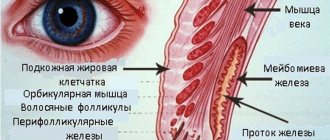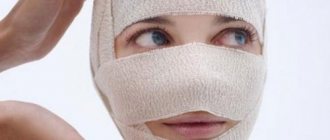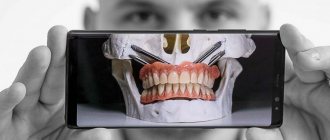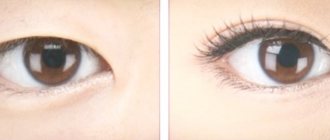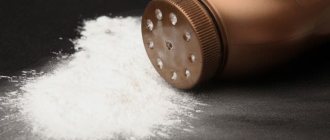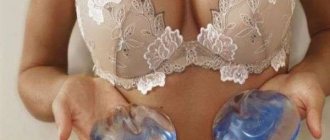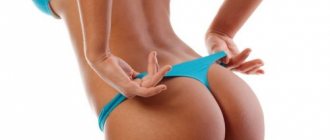Asian eye surgery - features of the procedure
This type of blepharoplasty allows you to change the shape of the patient's eyes. The doctor removes the overhanging tissue of the upper eyelid and forms a fold. As a result, the eyes “open” and visually enlarge, although, of course, in reality the size of the orbit and eyeball does not change. Asian eyelid surgery in Moscow is performed in two ways:
- With a cut. The procedure can significantly change the shape of the eyes. The surgeon makes incisions in the folds of the eyelid, so the stitches are not visible. The disadvantage of the method is a longer rehabilitation period.
- No cut. A more gentle, but less effective option. In this case, the doctor still makes incisions. They are simply located not on the skin, but on the surface of the mucous membrane. This method is used only if the tissues of the upper eyelid are quite thin.
Europeanization of the upper eyelids
41,000 rubles
Sign up for a consultation
Blepharoplasty is performed under both general and local anesthesia. It lasts about two hours. After the operation, the patient is given a bandage. You will have to stay in the hospital for several hours under the supervision of specialists.
The first results of the procedure are noticeable after 2 weeks. The surgeon will remove the sutures after 4-5 days for blepharoplasty without incisions and after 8-9 for surgery with incisions. After this, you can apply makeup and use your usual cosmetics. The scars will completely disappear in a month.
Characteristic features of ethnic blepharoplasty
Surgeons call plastic surgery of Asian eyelids the Singapore operation, and emphasize that this concept includes a set of measures aimed at changing the structural features of oriental eyes. The main goal of plastic correction is to make the look more open by removing part of the periorbital fat, forming a double fold on the upper eyelid and removing the epicanthus (the fold of skin that covers the lacrimal corner).
There are two ways of performing ethnic blepharoplasty:
- with a cut;
- without incision (suture plasty).
Blepharoplasty with an incision is the gold standard for surgical Europeanization of the eyelids, because it allows you to get the maximum result and solve several problems at once - remove fatty deposits and epicanthus, form a double fold on the eye and expand the eye orbit. The surgeon makes incisions in the natural folds of the skin, which makes post-operative scars almost invisible, and then applies several cosmetic stitches. The disadvantage of the operation is the long recovery period and the high risk of side effects.
Sutureplasty involves placing several invisible sutures along the muscles that lift the eyelid, which allows you to form a pronounced double fold on the upper eyelid (the height of the skin fold is adjusted by the surgeon). The technique is used in patients with thin skin (mainly at a young age) and in the absence of significant periorbital fat deposits. Plastic surgery is characterized by a short postoperative period and the absence of complications, but the absence of incisions does not allow the doctor to remove orbital fat.
According to reviews, Asian blepharoplasty is popular not only among those who want to completely change the eastern shape of the eyes; mainly, the services of plastic surgeons are resorted to by those people who only want to get a “double” fold on the upper eyelid, but at the same time preserve the ethnic features of the eyes their original form.
The operation takes place under general or local anesthesia, lasts on average one hour, and requires preliminary preparation in the form of a comprehensive medical examination (general and biochemical blood tests, ECG, fluorography).
“I contacted a plastic surgeon at the clinic regarding the removal of the epicanthus and the formation of a “double” fold on the eye. The orbital section did not change. The result pleased me, because along with the eyes, the appearance of the face changed dramatically.”
Asian eye surgery in Moscow - where is the best place to have it done?
There are many clinics offering this procedure. After all, plastic surgery for Asian eyes is quite in demand in Moscow. But remember: you shouldn’t risk your health and appearance and trust unverified clinics. Before you decide to go under the scalpel, read the reviews, find out about the experience of the doctors and the equipment of the medical center. You must be confident that blepharoplasty will be successful and without complications.
Dr. Listratenkova will tell you in detail about the operation, possible risks, contraindications, assess the condition of the skin and select the best option for blepharoplasty. The experience of our doctor, a serious approach to plastic surgery, and constantly updated equipment guarantee the safety of any operation.
Popular questions
Can eye shape change over time?
No. The operation provides a permanent effect.
Is the procedure dangerous for vision?
If the operation is performed by an experienced surgeon, it is absolutely safe and does not affect vision in any way.
Are there any complications?
An inexperienced doctor may make a mistake. The result will be suture dehiscence or eyelid inversion.
Europeanization of centuries
The average cost of the operation is 27″500 rubles.
The Singapore operation is intended to correct the Asian shape of the eyes in order to give it a Caucasian appearance.
The first Asian eyelid surgery was performed at the end of the 18th century. It is generally accepted that the birthplace of this word is the country with the same name. But that's not true. It’s just that “Singapore” is a word that is more convenient to pronounce and has already become established in speech for Russian speakers. In fact, the spelling is as follows - “sangapuri”. This word is of Korean origin and means “eyes without epicanthus” (the epicanthus is a vertical crescent-shaped fold of skin covering the inner corner of the palpebral fissure; a continuation of the fold of the upper eyelid).
Singaporei. Indications
- aesthetic desire to change the Asian eye shape to a European one;
- a congenital or post-traumatic defect of the eyelids in a Caucasian person associated with the development of epicanthus.
Singaporei. Contraindications
- oncological and endocrinological diseases (including diabetes mellitus and thyroid dysfunction);
- hypertension;
- diseases of the heart, blood vessels, lungs and other vital internal organs;
- blood diseases (including poor clotting);
- inflammatory processes of the eyelids and eyes (blepharitis, conjunctivitis, keratitis), dry eyes;
- increased eye pressure;
- pregnancy and breastfeeding.
Singaporei. How is the operation performed?
The operation is usually performed under general anesthesia (but sometimes under local anesthesia) and takes from 1 to 2 hours. There are two methods of performing singapore - suture (without incisions) and open (with incisions). The plastic surgeon individually selects the most suitable method of Asian blepharoplasty for each patient, depending on the degree of complexity.
First method. Suture
This technique is performed if the patient has slight drooping and thin skin of the upper eyelids. The main advantage of this method is the absence of a postoperative scar. In addition, the suture method allows you to redo the result if it turns out to be unsatisfactory.
At the beginning of the operation, the surgeon marks a line for the future skin fold of the upper eyelid. Next, tiny punctures (1 mm) are made in the skin of the eyelid. Then the doctor stitches all the tissues with an elastic surgical thread between the skin and the aponeurosis of the muscle that raises the upper eyelid (levator muscle). This is how the “European” fold is formed.
Second method. Open
Used in the vast majority of cases. Unlike the suture method, with the open Singapore method there will be an invisible postoperative scar.
The surgeon cuts the upper eyelid along the ciliary edge. The higher from the lash line it is created, the higher the fold will be, and the larger the eyes will appear. The doctor then excises the skin and subcutaneous structures by advancing the scalpel toward the orbicularis oculi muscle. The doctor cuts off a narrow strip from it. The next stage is dissection of the orbital septum, behind which the intraorbital fat is hidden.
When forming a deep “European” fold, the surgeon excises almost all of the orbital fat. In the case of double and small folds, little or no fat is removed.
The surgeon then removes part of the levator muscle. This is necessary for subsequent rapid tissue fusion, without noticeable tension.
At the end of the operation, the surgeon stitches the incised skin along with the levator aponeurosis of the upper eyelid. In addition to the fixing sutures placed in certain places of the eyelid, one continuous suture is applied along the entire incision line, and a disinfecting bandage is placed on top of it.
Singaporei. Rehabilitation
The bandage is removed the next day. On days 5-7, the sutures are removed, after which significant scars remain, which are hidden in the formed folds of the upper eyelids. Soft tissue swelling and bruising will disappear within two weeks. To relieve postoperative symptoms, painkillers, antiseptics, and decongestants can be prescribed. During the month after surgery, you should adhere to the following recommendations:
- exclude physical activity;
- limit the use of cosmetics;
- refuse contact lenses;
- when outdoors, wear sunglasses without taking them off;
- if swelling appears, do not use ointments, but apply ice;
- refuse reading, which causes severe eye strain;
- completely eliminate alcohol and smoking;
- Avoid any eye irritants.
Singaporei. Photos before and after
Currently, Singapore is part of the daily practice of plastic surgeons. Therefore, you can find photos before and after the operation on the websites of specialists performing Singapore surgery, in the “Portfolio” or “Results” sections. Additionally, you can see before and after photos in the corresponding section of our portal.
Singaporei. Prices
The cost of blepharoplasty is determined individually, primarily by the complexity of the operation, the extent of the surgical intervention and the qualifications of the surgeon. In general, the price range varies from 20,000 to 80,000 rubles. The average cost of Singaporean in Moscow is 35,000 rubles.
Singaporei. Who should have the operation?
O is considered a slightly more complex operation than conventional upper eyelid blepharoplasty. Accordingly, it requires more qualifications and experience of a specialist. During the operation, the surgeon removes not only excess tissue of the upper eyelids, but also the epicanthus, and also forms an additional supraorbital fold.
Plastic surgery on the Asian upper eyelids is currently becoming increasingly popular. The main goal of plastic surgery on the upper eyelids in Asians is to create or improve a clear and natural fold of the upper eyelid, as well as change the shape and shape of the eyes and eliminate their age-related changes.
Who is the procedure suitable for?
Indications for intervention include age-related changes and congenital pathologies of the upper eyelid:
- loose overhanging skin;
- wrinkles, creases and folds;
- fatty hernias;
- overhanging soft tissues, provoking the effect of a sad and tired look;
- congenital or acquired asymmetry;
- hypertrophy of the circular muscles in the periorbital zone;
- swelling;
- turning of the eyelids.
In some cases, cosmetic imperfections cause both psychological and physical discomfort. Over time, upper eyelid ptosis can lead to blurred vision, drooping eyelashes, and eye irritation. The constant need to strain the facial muscles to keep the eyes open leads to the formation of wrinkles on the forehead, in the area of the nasolabial folds and other areas.
Contraindications:
- pregnancy and lactation;
- increased intracranial or intraocular pressure;
- myopathy;
- corneal infections;
- impaired blood clotting;
- oncological pathologies;
- exacerbation of chronic diseases and infections;
- rehabilitation after ophthalmological interventions.
| Facial plastic surgery – Dr. Amjad Al-Yousef | |
| Upper blepharoplasty (eyelid surgery) | 95,000 rub. |
| Eyelid surgery with canthopexy | RUB 105,000 |
| Upper eyelid surgery with asymmetry correction | RUB 105,000 |
| Facial plastic surgery - Anna Petrovna Pershukova | |
| Upper blepharoplasty (eyelid surgery) | 55,000 rub. |
| Upper eyelid surgery with asymmetry correction | 60,000 rub. |
| Facial plastic surgery - Dr. Youssef Bassanovich Dergam Prices include a promotion with a 50% discount with permission to publish the results of photos and videos | |
| Upper blepharoplasty (eyelid surgery) | 40,000 rubles instead of 80,000 rubles |
| Upper eyelid surgery with asymmetry correction | 45,000 rubles instead of 90,000 rubles |
| Facial plastic surgery - Dr. Ivan Pavlovich Chesalin Prices include a promotion with a 50% discount with permission to publish the results of photos and videos | |
| Upper blepharoplasty (eyelid surgery) | 40,000 rubles instead of 80,000 rubles |
| Upper eyelid surgery with asymmetry correction | 45,000 rubles instead of 90,000 rubles |
Carrying out the operation
Blepharoplasty of Asian eyelids is performed under local infiltration anesthesia, and, if necessary, in combination with general anesthesia. The operation usually lasts about 1-1.5 hours. The eyeball itself is not affected during the operation and this operation is absolutely safe for vision. An incision in the upper eyelid is made in the natural folds of the eye so that when the eyes are open, the postoperative scar does not stand out. Sometimes additional manipulations may also be performed to realign the lacrimal gland, and if necessary, the fatty hernia is removed. Excess skin of the upper eyelid is removed by excision of a fusiform flap of skin according to the markings planned before surgery. A 2-3 mm wide strip of muscle is also excised from under the skin at the level of the lower incision. Then fixing sutures are applied to capture the skin edge of the lower incision, the aponeurosis of the muscle that lifts the eyelid and the skin edge of the upper incision. Next, an intradermal cosmetic suture is applied.
Adviсe
If the intention to take a step towards youth is serious and the decision is deliberate, then the following points must be taken into account. What to do:
- Carefully choose a doctor and a clinic where the operation will be performed. Meet the staff and evaluate their working conditions. If necessary, ask for documents confirming the right to perform such interventions.
- Do not neglect the surgeon’s advice when preparing for surgery and take all required tests.
- Pays attention to the information the surgeon says and does not hesitate to ask any questions you may have. Including what kind of cut will be used.
- Study reviews and get acquainted with the results of the operation from patients who have already undergone surgery and can give important advice, supported by experience.
- Do not deviate from the surgeon’s recommendations throughout the entire rehabilitation period. After all, the final result will largely depend not only on a brilliantly performed operation, but also on postoperative care. Don't underestimate the importance of this moment.
Result
The preliminary result of the operation is assessed after 1.5-2 months, the final result - 5-6 months. If you follow the recommendations of specialists and appropriate care, the result lasts throughout the patient’s life.
Europeanization of the eyelids is a popular procedure for people with eastern eye shape.
In particular, this is the most popular plastic surgery among residents of Yakutsk.
Because many Asians have single eyelids or very small double eyelids (a fold of skin on the upper eyelid) and a shallow socket, their eyes appear small, tired, sleepy, and sometimes cruel.
There are three main types of Europeanization of the eyelids:
- Epicanthoplasty
(surgery of the inner corner of the eyelid) - removal or softening of the epicanthus. This is a small fold of skin (also called the Mongolian fold due to its prevalence in people of the Mongoloid race), located between the inner corner of the eye and nose. It does not affect ocular or tear function. After surgery, the eyelid may appear longer and the eye will appear wider. Epicanthoplasty should be treated with great care because the inner eyelid is one of the most sensitive parts of the eye. Ideal candidates for epicanthoplasty are people with a Mongoloid eye shape, a large distance between the eyes, or small eyes. The operation takes on average 30 minutes. - Oriental blepharoplasty
is the medical term for plastic surgery on the upper and lower eyelids. The purpose of this operation is to create a crease in the upper eyelid using various methods. When creating a natural-looking double eyelid, the surgeon needs to take into account factors such as the patient's age and gender. Candidates for Asian blepharoplasty: those who want a more pronounced eyelid crease, people with drooping upper or lower eyelids, people with fatty bags in the eyelid area. It is important to understand that age may be a factor in the surgical method used. For example, a 60-year-old woman will likely need a different type of surgery compared to a 30-year-old man. The operation takes up to an hour and may leave a small scar. - Non-surgical Europeanization of eyelids
using special threads. This method gives a temporary effect. Recommended for those who have thin eyelid skin, a small amount of fat on the eyelids and tense eyelid skin. Although the non-surgical approach to Westernizing the eyelids is still popular in some areas of Japan due to its quick turnaround time, short recovery time, and low cost, the suturing method has not caught on in most Asian or Western countries.
The price of oriental blepharoplasty in Moscow, Rostov-on-Don, Yekaterinburg, Novosibirsk, Tyumen, Angarsk, Ulan-Ude and other large Russian cities ranges from 50 to 80 thousand rubles. The cost of epicanthoplasty is from 20,000 to 50,000 rubles.
In clinics in Almaty, Bishkek and other large cities of Kazakhstan, the price of oriental blepharoplasty is 205,000 tenge and above. The cost of epicanthoplasty is from 130,000 tenge.
Are you sure that your face tells others about your strengths?
In ancient times, there was an amazing science - physiognomy, the science of interpreting facial features, based on the subjective perception of the observer. Aristotle was one of its first researchers. In his opinion, “a thick nose, like a bull’s, means laziness, a wide nose with large nostrils, like a pig’s, means stupidity, a sharp, like a dog’s nose, a sign of choleric temperament, an aquiline nose means courage, hooked like a crow’s, - alertness." And the founder of criminal anthropology, Johann Caspar Lavater, believed that a person’s mental life is reflected by the structure and outline of the skull and forehead; moral and emotional life is reflected in the contours of the nose and cheeks; and the fold of the mouth and the line of the jaw speak of sensual, animal qualities.
Expert comment:
“The laws of physiognomy operate in both directions. Over many years of practice, I have been convinced more than once: not only character influences appearance, but also appearance influences character. For example, a girl makes a European eye shape and thereby opens them wide to the world, literally and figuratively. And gaining a narrow chin makes its owner fragile and tender.
The European appearance of a man with a strong chin creates an aura of confidence and masculinity around his owner - and bestows these properties on him.
In your quest for a new face, you should not simply “reshape” yourself. Contact a surgeon who, like a good stylist, will create an IMAGE.”
Others enlarge the center of the cheek at the front, adding volume to thin and very flat faces in the under-eye area. They not only create relief. Such implants are excellent for eliminating tear troughs and dark circles under the eyes. After installing them, you will forget about concealer, even if you have been using it since school.
Expert comment:
Many people experience flattening of the face as they age, after about 45 years. In this case, implants serve not only to harmonize features. By maintaining a high position of facial tissues, they perfectly prevent the appearance of jowls and nasolabial folds.
Facial oval stretching
using Porex chin and jaw implants. Depending on the implant, the result may be a strong-willed or, on the contrary, a delicate and narrow chin, indicating the sophistication of its owner. But regardless of shape, a well-defined chin “stretches” the face, makes it more attractive and visually lengthens the neck.
Emphasis on the angles of the lower jaw.
Well-defined angles of the lower jaw make the face sculpted, and at the same time naturally remove premature jowls, nasolabial folds and a double chin without lifting procedures.
Often the Slavic type of face does not have a clear jawline, it is blurred, and the face appears flat. Correction of the lower jaw gives the face texture and clear, attractive outlines.
Europeanizing blepharoplasty.
Creating European eyes is a three-step process: forming a fold on the upper eyelid, removing the skin that hides the inner corner of the eye (epicanthus), and removing excess fat from the upper eyelid.
The operation is often complicated: the eye shape is enlarged and a Hollywood incision is formed - a raised outer corner of the eye and an elongated almond shape.
How to prepare for eyelid surgery on Asian eyes: how Asian eyelid surgery is done
As with lip contouring and most other cosmetic surgeries, Asian eyelid surgery is possible if the patient is in good health. It is important that he has normal blood pressure and does not take medications or supplements that thin the blood.
Before the operation, consultation with a plastic surgeon, ophthalmologist and therapist is necessary, as well as providing the results of a general blood test, blood coagulation and blood RW. Depending on the patient's health, other tests may be ordered.
During your conversation with your plastic surgeon, various factors will be assessed, including:
- thickness and condition of the skin;
- volume of fat under the skin;
- previous history of cosmetic procedures;
- unique anatomy around the eyes;
- patient's age;
- patient's gender.
How is eyelid surgery on Asian eyes (blepharoplasty) done?
The surgical procedure aims to change the shape of the upper eyelid. Depending on the amount of additional fat and skin under the upper eyelid, the doctor will choose a non-incisional, partially incisional, or incisional method.
- From a technical point of view non-incisional method
refers to surgery, but instead of making an incision and removing skin from the upper eyelid, the doctor makes 3-5 small holes in the superficial and deep tissues of the upper eyelid. The suture thread passes through them. The fold is always present (static fold) regardless of whether the eyes are open or closed. There are no scars left after this procedure, recovery takes place in 2 days. - In the partially incisional
Asian eyelid surgery, a small incision is made to remove fat and the crease is created using a thread. This leaves an almost invisible scar, and recovery takes up to 5 days. - With the incisional option,
a full incision is made on the eyelid, excess fat is removed, and the surgeon manipulates the eyelid tissue to create a beautiful crease. Recovery occurs in 1-2 weeks.
The first two procedures are done under local anesthesia with sedation. The incisional procedure is performed under both local and general anesthesia. With epicanthoplasty, the eyelid fold is formed at a distance of 6 to 10 mm from the ciliary edge of the eyelid. The surgeon makes an incision at the site of the fold, removing a narrow strip of muscle, excess fat, and a small strip of excess skin.
What is blepharoplasty? Indications and purpose of surgery
The human eyelids are an auxiliary organ of the visual system. In addition to its most important functions, it plays a big role in the perception of appearance. Age-related changes or dissatisfaction with natural characteristics sometimes cause psychological discomfort and become a cause of self-doubt. When other means fail, the achievements of plastic surgery will be a good solution.
Blepharoplasty is an operation that gives an unsurpassed effect in the following situations:
- Loss of elasticity and inevitable sagging of the skin, its excess in the eyelid area.
- “Bags” under the eyes that cannot be corrected by other means.
- The desire to change the shape of the eyes.
Blepharoplasty can be of the following types:
- Upper.
- Bottom.
- Transconjunctival (does not require sutures).
- Oriental (transformation of the Asian section into the European one).
- Canthoplasty (change of incision).
However, some types of eyelid surgery do not require anesthesia and are performed under local anesthesia.
Blepharoplasty - before and after surgery
Blepharoplasty of Asian eyes - contraindications and postoperative care
Contraindications to blepharoplasty for Asian eyes:
- diabetes mellitus and other endocrine diseases;
- problems with blood clotting;
- increased eye pressure;
- severe somatic diseases.
The first day after incisional blepharoplasty of Asian eyes, the patient is in the hospital.
- For three days after surgery, antibacterial drops are instilled into the eyes and cold compresses are applied to the eyelid.
- Women after Asian eyelid blepharoplasty should not wear eye makeup, mascara, or contact lenses for two weeks.
- You should wear sunglasses for the same amount of time.
Contraindications
Any interventions of this kind have both general and specific contraindications. For example, plastic surgery is strictly not performed:
- During menstruation or pregnancy in women.
- Persons with diabetes.
- For oncological diseases.
- Patients with thyroid diseases.
- For diseases of the cardiovascular system.
- For blood clotting disorders.
- Patients with bronchial asthma.
Particular contraindications in the case of blepharoplasty include:
- Increased intraocular and/or blood pressure.
- Dry eye syndrome.
- Any inflammatory processes in the body.
- Blepharospasm.
The doctor must be familiar with the complete list upon first contact. You should not ignore his recommendations and avoid the examination. Health is our main wealth!
Are the results of oriental eyelid surgery always good?
Eyelids without a double fold and epicanthus are not unique to East Asians and can be found in other ethnic groups such as the indigenous Indian peoples of the Americas.
Moreover, many people of Asian descent have subtle East Asian features, especially in the eye area.
In other words, plastic surgery of the eastern eyelids will be individual for each person.
- Many plastic surgeons consider oriental eyelid surgery to be the least simple of all cosmetic procedures. Its results can vary greatly depending on the skill and experience of the doctor and the physical limitations of the patient, such as skin thickness, incorrect direction of eyelash growth, eye asymmetry, etc.
- Incomplete patient satisfaction with the final result is a consequence of difficulties during the operation, as well as, often, unrealistic expectations from the procedure. The effect of the operation may disappear after 7-8 years, and then a second operation will be required.
- While serious complications of eastern eyelid surgery, such as infection, visible scarring, persistent watery eyes, lower eyelid ectropion, and vision loss, are very rare, all types of double eyelid surgery can create aesthetic problems, such as an unnatural appearance. eye or too high double fold.
Rehabilitation period
In order to recover and evaluate the achieved effect, the patient will need an average of one to two weeks. It is necessary to take into account the individual characteristics of the body and the speed of metabolic processes, to stimulate which the doctor may prescribe a course of hardware procedures.
But even without them, recovery occurs quite quickly, especially in comparison with other interventions. If blepharoplasty was performed under anesthesia, it is recommended to stay in the clinic for the first 24 hours. For the first three to four days, the surgeon prescribes special drops with an antiseptic effect.
If stitches are applied, they are removed after the period of using the drops has expired. Unpleasant consequences, such as bruising and swelling, can last up to two weeks.
There are special restrictions for the entire rehabilitation period:
- High eye strain should be avoided.
- Avoid wearing contact lenses.
- Limit visits to saunas and steam baths, and do not take excessively hot showers.
- Reduce alcohol consumption and quit smoking.
- Do not stay in the open sun for a long time.
- Minimize all physical activity.
- You should not take medications without the consent of your surgeon.
- Do not use decorative cosmetics for the first 10 days.
The entire recovery period, as a rule, takes place under the supervision of a specialist, and in case of the slightest deviations, appropriate measures are taken. It is very important to follow all the rules, then the result will not be long in coming. And it will be possible to return to your usual way of life in just one and a half to two months.
Rehabilitation
In the first week, swelling of the periorbital area increases, pain in the eyes and pain appear, but the unpleasant symptoms are relieved with painkillers.
Once every two days, it is recommended that the seams be treated by a specialist. The suture material is completely removed after 4–5 days, if it was not applied with self-absorbing sutures. Then a special patch is applied for another 3 days, and cold lotions are prescribed to reduce swelling.
The doctor also prescribes antiseptic drops for eye drops, recommends sleeping with your head elevated and limiting physical activity, watching TV, reading, and working at the computer for the next 7 to 9 days.
Makeup can be applied 10 days after surgery. The scar becomes almost invisible after 45 – 60 days. In general, rehabilitation after upper blepharoplasty lasts up to 3 weeks. The recovery period depends on the individual characteristics of the body (patients over 45 years of age have thicker skin and are more prone to swelling).
Rehabilitation after blepharoplasty
If the operation is performed under general anesthesia, the patient can stay in the hospital for up to a day, if under local anesthesia, he is discharged faster, remaining in the clinic from 2 to 12 hours (depending on how he feels). The most important thing during this period is to follow all the doctor’s recommendations, even if at first glance they do not seem so important.
During the first few days, it is recommended to apply cold compresses to the eyelid area to reduce swelling and
For 2 weeks after the procedure, you must observe restrictions on physical activity, and also do not bend your head down, do not rub your eyelids, including when washing your face, and do not apply makeup. It is worth refusing to visit the bathhouse or sauna, and drinking alcoholic beverages. It is recommended to use sunglasses when outdoors. It is also forbidden to strain your eyesight: watching TV, reading, working at the computer. It is better to temporarily replace contact lenses with glasses.
During the entire postoperative period, it is prohibited to sleep lying on your side or stomach.
Helpful tip: To eliminate the risk of rolling over during sleep and to feel more comfortable, you can make a small bolster out of pillows or a blanket and place it under your knees.
The surgeon will prescribe ophthalmic drops with an anesthetic, as well as moisturizing and anti-inflammatory ones, which must be instilled regularly.
A week after surgery, physical therapy may be performed to speed up the healing process. Laser therapy can shorten recovery by many times. It is better to agree in advance with your doctor about the possibility of carrying out procedures in your clinic. Many institutions provide significant discounts for their clients if they carry out rehabilitation activities.
If the bruises go away in a few days, then final recovery occurs only 1.5-2 months after the intervention.
It is important to come for post-operative examinations on the date specified by the surgeon. Postoperative period
Types of non-surgical plastic surgery
Non-surgical eyelid lift is comparable in effectiveness to surgical intervention. The main goal of this type of blepharoplasty is to rejuvenate the dermis of the eyelids. The procedure is performed using special devices or injections that help dissolve fat deposits, remove fluid and regenerate the skin framework.
- Invasive blepharoplasty is the injection of drugs into the skin to stimulate collagen production or replenish the deficiency of certain substances.
- Hardware therapy is a non-contact effect on the skin of one or another irradiation (current, radio waves, ultrasound, light beam). As a result of heating the subcutaneous tissue, local metabolism, blood flow and lymph flow increases. Collagen fibers are reduced, protein production is stimulated, which leads to skin tightening, wrinkles smoothing, and fat deposits are eliminated:
- Microcurrent therapy.
- Thermolifting: infrared lifting and RF lifting (impact on the deep layers of the skin and subcutaneous fat tissue with high-frequency electromagnetic pulses).
- Ultrasound therapy.
- Laser grinding.
- Plasma blepharoplasty is the effect of cold plasma on the skin by inserting a needle, which leads to microtrauma of the dermis, and after its regeneration, the quality of the epithelium improves.
